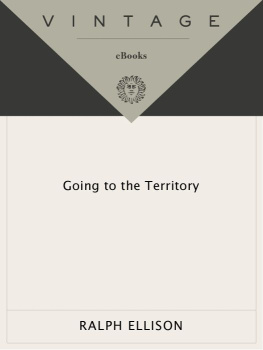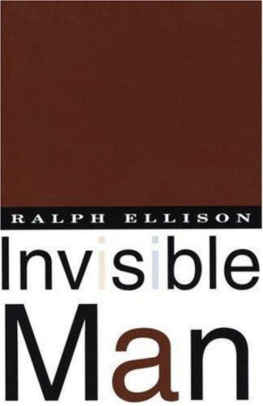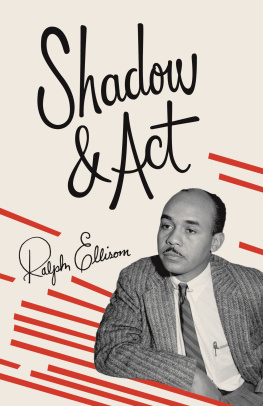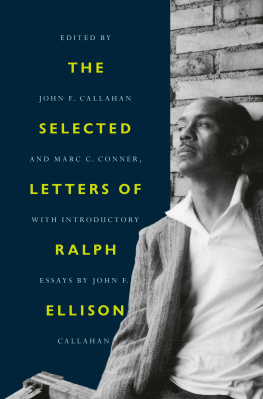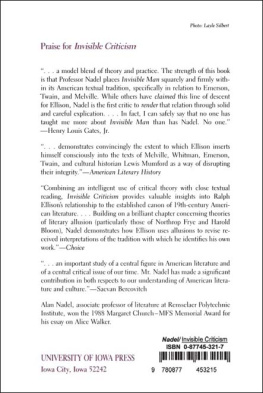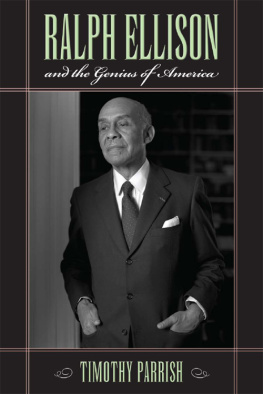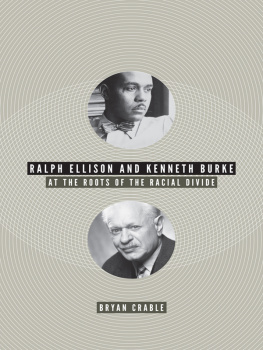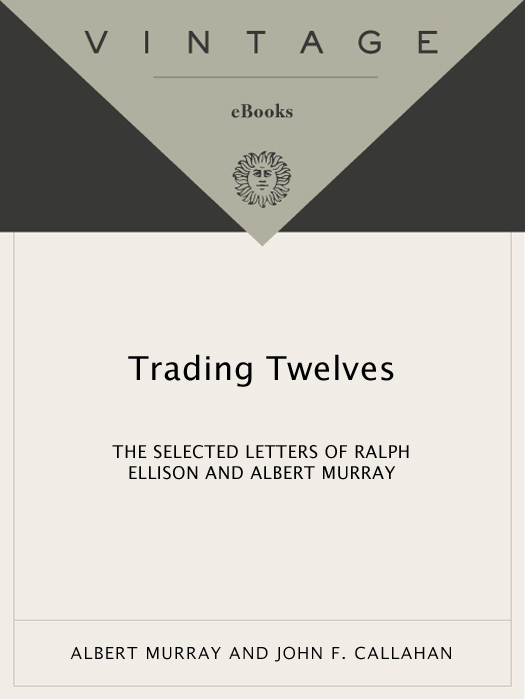Acclaim for
TRADING TWELVES
An invaluable slice of literary history. Fascinating and endlessly informative.
The Miami Herald
Suggests an opportunity to eavesdrop on history in the making, sort of like sitting in on an early jam session at Mintons Playhouse.
The Washington Post
An open window into a literary friendship and beyond. Delight fully engaging. This is Ellison and Murray at their relaxed best, shooting the breeze about photography, music, or cooking; riffing on Faulkner, Malraux, Robert Penn Warren, or T. S. Eliot. A small treasure.
Kirkus Reviews (starred)
A must-read for anyone interested in the thought processes of these two brilliant, yet often misunderstood, authors. Reading the correspondence between these two towering figures of African American literature is like being a kid and listening to the grown-ups swap stories full of humor and wisdom.
Black Issues Book Review
A pleasure to read. Funny, thoughtful exchanges on jazz figures, biting comments on literary foes and ample details of the literary and domestic lives of these two gifted and iconoclastic American writers.
Publishers Weekly
These letters are important not only for their views on literature and culture but also for their warm and engaging record of a friendship.
Library Journal (starred review)
R ALPH E LLISON was born in Oklahoma in 1914. He is the author of the novel Invisible Man (1952), as well as numerous essays and short stories. He died in New York City in 1994. Random House published Juneteenth, the book-length excerpt from his unfinished second novel, posthumously in 1999.
A LBERT M URRAY was born in Alabama in 1916. A cultural critic, biographer, essayist, and novelist, he has taught at several colleges, including Colgate and Barnard, and his works include The Omni-Americans, South to a Very Old Place, Train Whistle Guitar, The Blue Devils of Nada, and The Seven League Boots. He lives in New York City.
J OHN F. C ALLAHAN is Morgan S. Odell Professor of Humanities at Lewis and Clark College in Portland, Oregon. He is the editor of Juneteenth and The Collected Essays of Ralph Ellison. Callahan is the literary executor of Ralph Ellisons estate.
Also by Ralph Ellison
Invisible Man
Shadow and Act
Going to the Territory
The Collected Essays of Ralph Ellison
Flying Home and Other Stories
Juneteenth
Also by Albert Murray
The Omni-Americans
South to a Very Old Place
The Hero and the Blues
Train Whistle Guitar
Stomping the Blues
Good Morning Blues: The Autobiography of Count Basie
The Spyglass Tree
The Seven League Boots
The Blue Devils of Nada
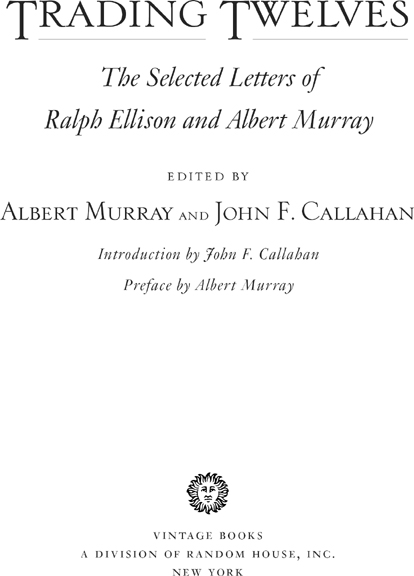
I NTRODUCTION
In 1959, toward the end of his decade-long correspondence with Ralph Ellison, Air Force Captain Albert Murray writes wittily of judging a drill competition put on in Los Angeles by Negro Shriners. Man, he tells Ellison, I was hard put to maintain a solemn military calm watching some of the old middle-age Moses mixing all that old flatfooted, box-ankled, bunniontoed-bellhopping-headwaitering-pullmanportering stuff in there with West Point. Not to be outdone, Ellison replies from New York, in the second to last letter he wrote Murray, that during his boyhood in Oklahoma City, no kid of a certain height was safe from [the] enthusiasm of old guys mad for drill. With his characteristic blend of comic description and analysis, Ellison remembers vividly the passion for drill and dance of the influential Negro adults back in Oklahoma. Come to think of it, I probably embraced the difficult discipline of the trumpet just so that I could escape those cats. Nevertheless, young Ellison, as a member of the band at Douglass High School, accompanies the Elks drill team as far as Denver to the Western Convention where men and women shuffled and ruffled and danced and pranced; some were tight and others were clowning and kidding the whole idea of what they were doing to a military form, discipline, pose, you name itso that the occasion had everything: comedy and satire as well as the tension of tough competition. I can still see some of those tall, Watusi-looking Moses, wearing capes and fezzes and leaning on a pivot like a stagecoach taking a sharp curve, their shoulders touching, their faces skimming across a cymbal lightly. I suppose there was the usual Negro yearning for ceremony and identification in it, and a feeling of potentiality and a threatalong with the joy in formalized, swinging movement. Whatever, Im glad I lived through that phase and you brought it all back again.
Realizing that memories come and go and much that is precious about culture and tradition is summoned in conversation, then lost, Ellison floats an idea that suggests he is aware of the richness and depth of his and Murrays correspondence: Why dont we do something along this line for publication, perhaps as an exchange of letters? Im sure it would be taken by someone, especially if we pointed out the relationship to jazz. Think about it anyway. As things turned out, nothing comes of Ellisons trial balloon; in fact, as Albert Murray tells us, letters between them cease less than a year later. But the letters they did write constitute a remarkable correspondence between two American men of letters whose importance only grows as the twentieth century passes away, and a new century brings closer and closer that millennial nation of omni-Americans whose actuality and potential was recognized and described by both Murray and Ellison more than fifty years ago.
The letters between Ellison and Murray are the bounty of a rare and spontaneous friendship in which each taps into the deepest experience of the other. Spanning the fifties, their correspondence chronicles a friendship at the same time that it reveals the increasing, active visibility of the Negro who issued one unexpected challenge after another to the often desperate conformities and complacency of postwar America. Written while each man passed from youth into middle life (Ellison was thirty-five when the correspondence begins, Murray thirty-three), the letters have something of the unselfconscious, jaunty confidence and defiant attitude of the letters of Hemingway and Fitzgerald at comparable early stages in their writing lives. And although Ellison and Murray were friends on many levels, their correspondence is first and foremost a literary one in which literary aspiration is nourished by a parallel, almost proprietary interest in jazz. Indeed, like jazzmen, Murray and Ellison find their rhythm with each other and hit their stride on the page gradually.
Two points of reference provide the initial bass line. The first is Tuskegee, where the two encountered each other in 1935, when Ellison was a junior and Murray a freshman. Because Murray is teaching at his alma mater when their correspondence begins, he whets Ellisons appetite for news with choice bits of gossip about whos in and whos out, as well as comments about the current character and direction of the place. Like many who leave their chosen college before graduation, Ellison has a love-hate relationship with Tuskegee about which he is much more honest in letters to Murray than in his more respectful public comments. The other tie that from the first binds Ellison and Murray is their literary ambition. When he begins writing to Murray, Ellison is obsessively yet good-naturedly in the last throes of work on


